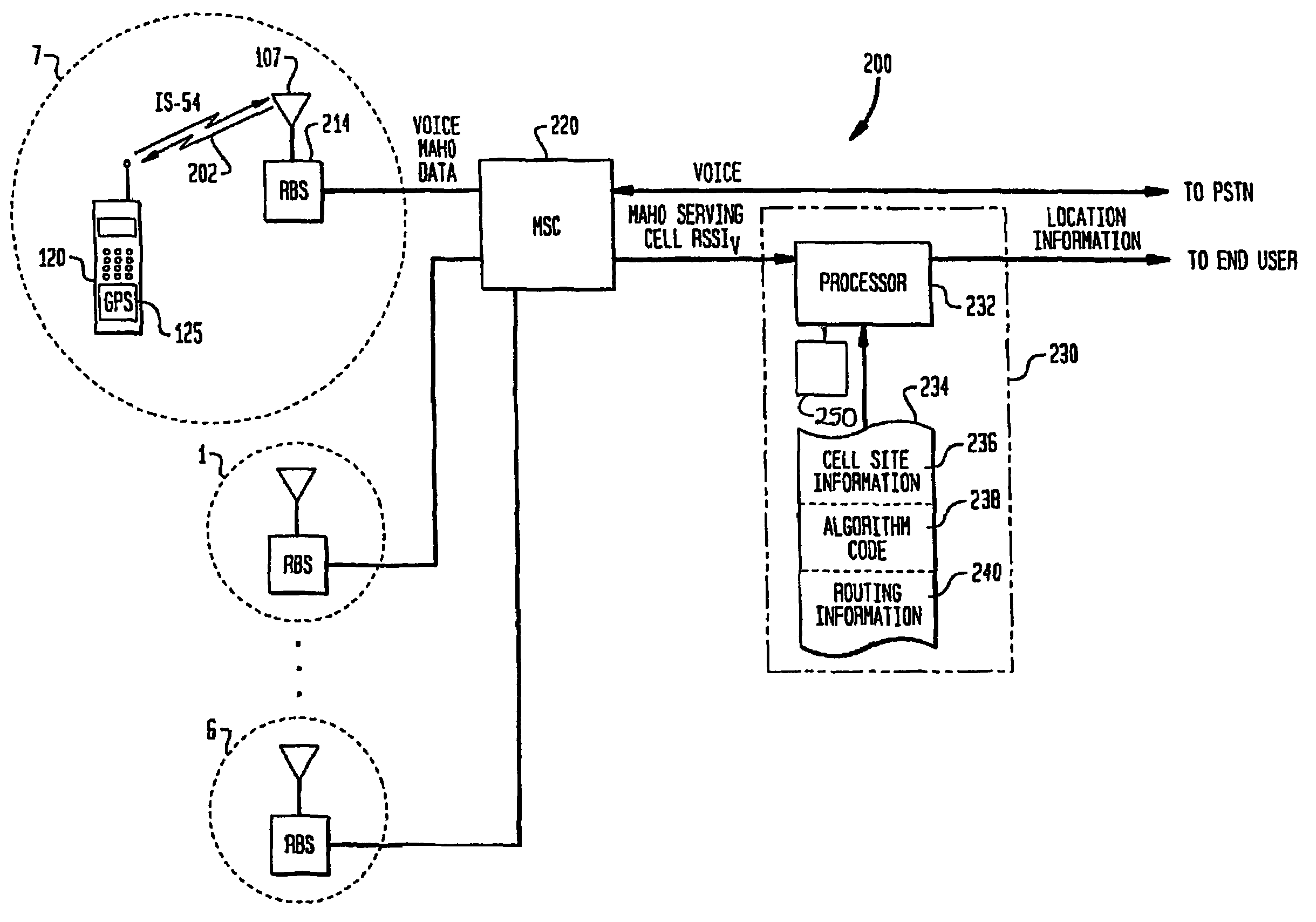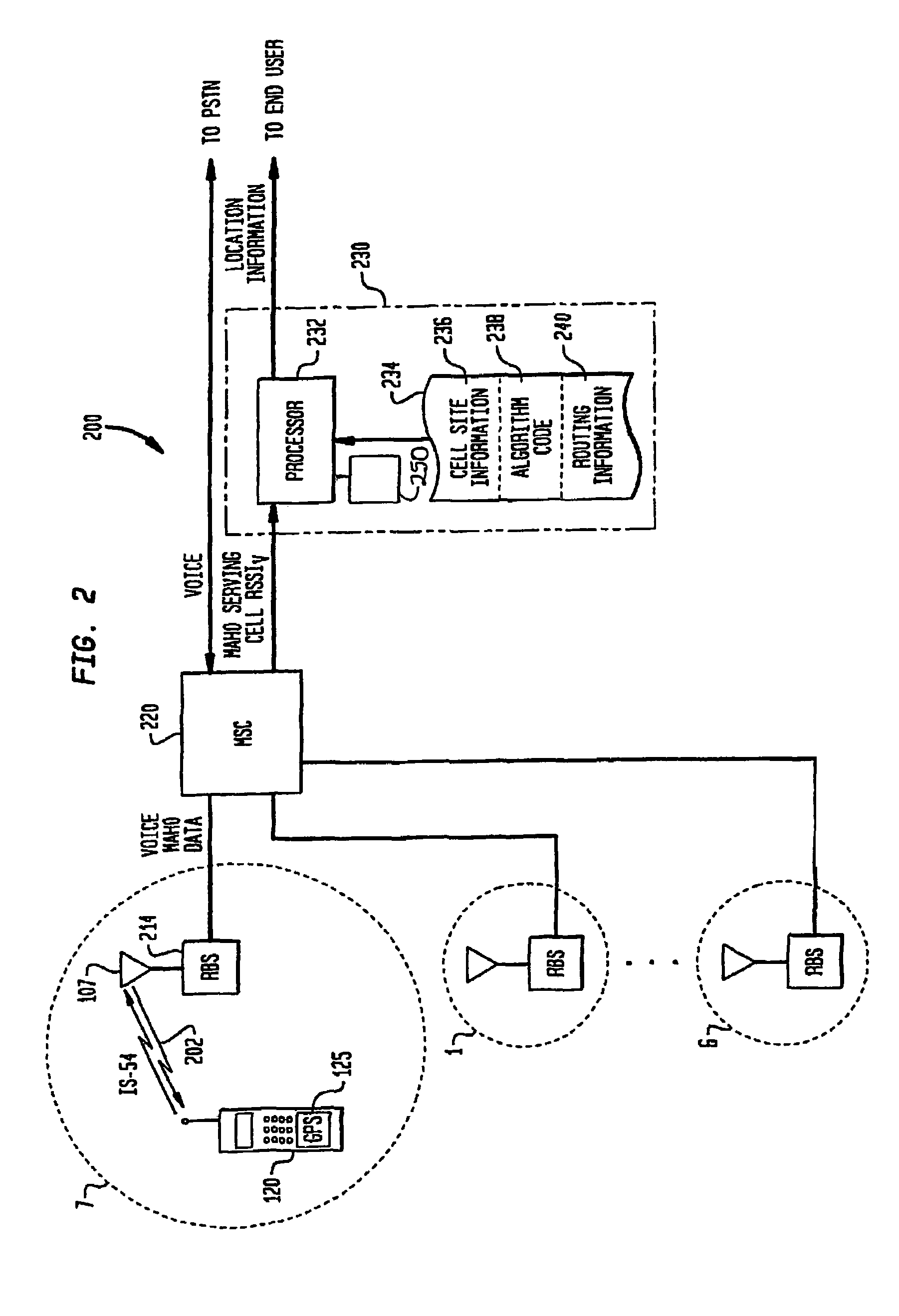Methods and apparatus for mobile station location estimation
a technology for mobile stations and location information, applied in the field of methods and apparatus for mobile station location estimation, can solve the problems of insufficient location information for users who call emergency numbers, unsatisfactory addition of components, and public service providers, such as poli
- Summary
- Abstract
- Description
- Claims
- Application Information
AI Technical Summary
Problems solved by technology
Method used
Image
Examples
Embodiment Construction
[0042]FIG. 1 shows the geographic serving area 100 of a mobile telephone system. The serving area 100 is shown having 7 hexagonal cells numbered 1-7. Cell 7 is shown in the center, surrounded by adjacent cells 1-6. The serving area 100 of a mobile telephone system would typically contain more than 7 cells, however, for ease of reference, only 7 cells are shown in FIG. 1. Each cell 1-7 contains an antenna 101-107 which is used to transmit signals to and receive signals from mobile telephones such as a mobile telephone 120 within the mobile telephone system serving area 100.
[0043]A mobile telephone system 200 is shown in FIG. 2. Cell 7 is shown containing antenna 107 connected to a radio base station (RBS) 214. The mobile telephone 120 shown within cell 7 communicates with the mobile telephone system 200 via an air interface 202. For example, the mobile telephone 120 can be a digital mobile telephone that operates according to a North American time division multiple access (TDMA) syst...
PUM
 Login to View More
Login to View More Abstract
Description
Claims
Application Information
 Login to View More
Login to View More - R&D
- Intellectual Property
- Life Sciences
- Materials
- Tech Scout
- Unparalleled Data Quality
- Higher Quality Content
- 60% Fewer Hallucinations
Browse by: Latest US Patents, China's latest patents, Technical Efficacy Thesaurus, Application Domain, Technology Topic, Popular Technical Reports.
© 2025 PatSnap. All rights reserved.Legal|Privacy policy|Modern Slavery Act Transparency Statement|Sitemap|About US| Contact US: help@patsnap.com



